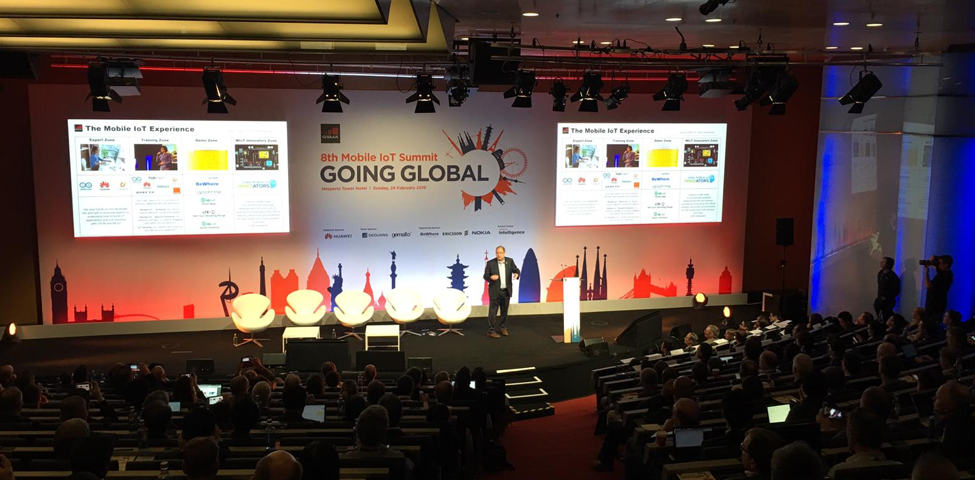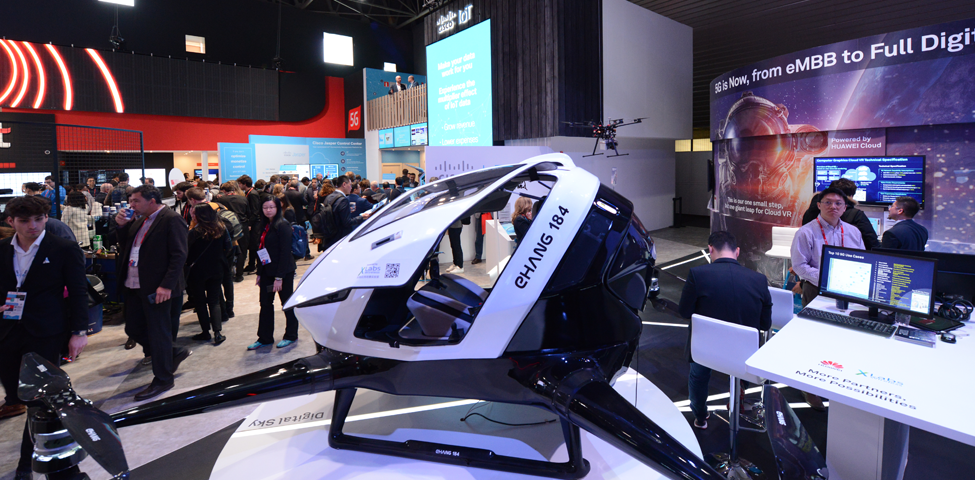Join the 8th Mobile IoT Summit to hear the latest industry updates from senior IoT experts. Companies include AT&T, Huawei, Nokia, Singtel and Telefonica. Extensive global deployments and the new business opportunities these provide in the consumer and industrial markets, will be the focus of this year’s event.
Key topics:
- Maximising business value from LTE-M and NB-IoT technologies
- The long term outlook for Mobile IoT in relation to 5G
- Examples of real customer deployments
The Mobile IoT Summit is free to attend, but you need to register in advance. Seats are limited so we encourage you to register early.
Mobile IoT Summit
| Time | Agenda | Speakers |
| 12:00 | Welcome Lunch/ Registration & IoT Demonstration | |
| 13:00 | Welcome and Introduction | GSMA: Amaia White, Senior Project Manager GSMA: Graham Trickey, Head of IoT Programme |
| 13:20 | Keynote 1: Global Deployment of Networks and Success to date | Huawei: Veni Shone, President of LTE Solution C-V2X & CIoT Solutions, Vice Chairman, China ITS Industry Alliance |
| 13:35 | Keynote 2: Experience of Mobile IoT to date | AT&T: Cameron Coursey, Vice President IoT |
| 14:00 | Panel Discussion: Mobile IoT Business Opportunity and Maximising Value | BeWhere Inc: Owen Moore – Chairman, CEO and Co-Founder Ericsson: Marie Hogan – Head of Broadband and IoT Business Area Networks Nokia: Ankur Bhan – Global Head of Nokia’s Worldwide IoT Network Grid (WING) T-Systems International: Dr. Felix Wunderer – VP IoT Products & Services GSMA: Amaia White, Senior Project Manager (Moderator) |
| 14:45 | Coffee Break & IoT Demonstration | |
| 15:15 | Customer Deployment Presentations | Presentation 1: Orange: Ronan Le Bras – Head of Technical Strategy – Wireless Networks SNCF: Mathieu Belouar, Innovations & Connectivity Manager Presentation 2: Gemalto: Andreas Haegele, Senior Vice President – IoT Products Sequans: Georges Karam, CEO |
| 16:00 | Mobile Operator Panel Discussion: The Future of Mobile IoT | Singtel: Diomedes Kastanis, Head of IoT Telefonica: Andres Escribano, IoT Connectivity Director Verizon: Steve Szabo, Global Head of IoT Vodafone: Lory Thorpe – Head of IoT Innovation GSMA: Mona Mustapha, IoT Technical Specialist (Moderator) |
| 17:00 | Networking Drinks & IoT Demonstration | |
| 18:15 | Buses to Plaza Catalonia | |
Speakers and Experts
Mobile IoT Demonstration
| Partners | Demonstration | Technology |
| AT&T | LTE-M Smart Parking Meter Smart Parking Payment System: The patented IPS Smart Meter retrofits into current on-street parking meter housings, and offers multiple payment options (coins, credit/debit card, smart card, tokens, pay-by-phone, and optional NFC/contactless payment) |
|
| BeWhere Orange |
Asset Tracking and Environmental Monitoring Using LTE-M BeWhere’s low-cost and sophisticated trackers report sensors data and GPS location to the BeWhere back end, using LTE-M or NB-IoT connectivity. In less than 8 months, BeWhere has deployed over 55,000 trackers for transportation, logistics, smart cities, smart agriculture and other various use cases; displaying all of this data into the BeWhere’s cloud-based device management and analytics platform; as well as into third-party’s software via a simple API integration. |
|
| G+D Mobile Security | NB-IoT SIM-based E2E Security G+D’s secure end-to-end NB-IoT data protection solution is independent of device chipsets that would raise the bill-of-material (BOM) of the cost-sensitive edge devices. This low-dependency solution is a fast and low-cost way to introduce IoT security without having to redesigning existing IoT devices. This solution has been shortlisted for the Global Telecom Award in the category “Security Solution of the Year”. |
SIM Security |
| GSMA Intelligence | IoT for Enterprise | |
| Huawei | Connect Everything with NB-IoT Showcasing Asset Tracker, Smart Watch, Smoke Detector, Water Meter and motocycle/electric bike Tracker |
|
 |
Mobile IoT Showcase This showcases a wide range of commercially available hardware for LTE-M and NB-IoT. |
|
| Intenses Orange SNCF |
LTE-M Solution Showing Asset Tracker, Smart Watch, Smoke Detector, Water Meter and motocycle/electric bike Tracker |
|
| Gemalto (Thales) Sequans |
Connecting More and Securing All on Mobile IoT Networks | |
| Sierra Wireless | Peace of mind at your fingertips Call for help with one push of the thumb; Feel safe even without your phone; Stay stylish with an award-winning sleek design |
|
In Case You Missed It
MWC19 IoT Blogs
Thursday 28 March, 2019
Making Mobile IoT Easy
Monday 25 February, 2019
Mobile IoT Summit: Collaboration Deepens as Global Use Cases Multiply
Tuesday 5 February, 2019
IoT Takes Centre Stage as Mobile World Congress Rolls into View





